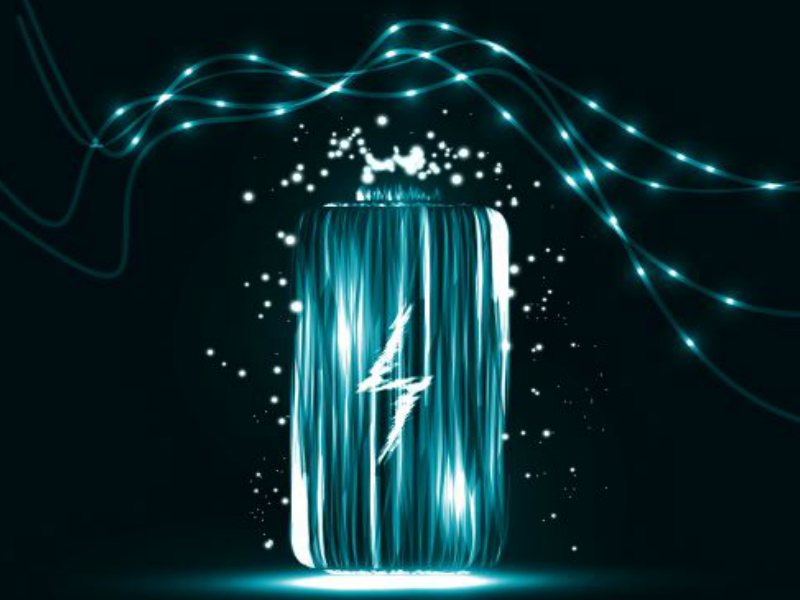by Lakshika Wewagama
We all know of capacitors and batteries as devices that store energy. Capacitors store energy as electrostatic potential and batteries store energy as electrochemical potential. What if there is a device with combined properties of a capacitor and a battery? There is. And It is called a supercapacitor.
There are three types of supercapacitors. Namely Electrostatic Double Layer Capacitor (EDLC), Pseudocapacitor and Hybrid Capacitor based on their energy storing mechanism.
- EDLC store charges at the electrode-electrolyte interface via electrostatic accumulation of charges.
- Pseudocapacitors on the other hand charge transfer through electrosorption, reversible redox reactions and intercalation at or near the surface of the electrode material.
- Hybrid capacitors are a combination of above two mechanisms with both electrostatic and electrochemical behaviors.
Although there are different types of supercapacitors, electrical double layer phenomenon is same for all.
Helmholtz double layer
When a voltage is applied three main interactions occur. A layer of polarized ions assembles on the solid electrode surface. Monolayer of solvated ions in the electrolyte adheres to the electrode surface by physical adsorption. Dissolved and solvated ions in the electrolyte move towards the polarized electrode forming another layer with opposite polarity. Formed monolayer separates the other two layers creating a Helmholtz Plane which acts as a molecular dielectric for the formed capacitor at the electrode electrolyte surface.
Surface area of the electrodes and the separation distance between the current collectors are two crucial factors for the capacitance of a capacitor. Increased effective surface area and decreased distance between formed double layer accounts for the superior capacitance values of supercapacitors.
A supercapacitor consists of two current collectors, two electrodes, electrolyte and a separator. All four of these different elements contributes to the final performance of the device.
Current collector
Metallic current collectors are used to place or coat the electrode material and to evaluate the electrochemical properties of the electrode-electrolyte system. Current collectors of high electrical and chemical stability, corrosion resistance, mechanical flexibility together with low contact resistance will contribute to increase the power density of the device. Nickel, Aluminium, Stainless steel, Copper, Titanium, Carbon fiber and Platinum as foils or forms are currently being used as current collectors.
Electrode
Electrodes accumulates and intercalates ions from the electrolyte during charging and transfer them as a flow of charge to the current collector when discharging. By increasing the surface area of the electrode higher specific capacitances could be achieved. Charge storage in an electrode depends on the type of electrode material used. EDLC commonly use activated carbon, carbon nanotube or graphene-based electrode materials. Pseudocapacitors use metal oxide and conducting polymers. Hybrid electrodes use a combination of activated carbon, metal oxide and battery electrode materials.
Metal organic frameworks, covalent organic framework, MXenes, metal nitrides and black phosphorus are some of the emerging electrode materials.
Electrolyte
Electrolytes can be categorized as aqueous, organic, ionic liquid, solid state or quasi solid state and redox-active according to their chemical and physical structures. High potential window, electrochemical stability, good ionic conductivity, large operating temperature range, low volatility, non-flammability and nontoxicity are some of the key criteria considered of an electrolyte used in a supercapacitor.
Separator
Separator is a semi-permeable material like cellulose or polypropylene. Thickness, material composition, wettability and structure are some of the important features of a separator material.
Supercapacitors are an emergent energy storage technology with miscellaneous applications,
- Biological supercapacitors made with nontoxic materials are functionalized with body fluids to power up Implantable electronic medical devices.
- Fast charging and discharging ability of these devices are useful in Robotics and Unmanned Arial Vehicles (UAV).
- Sensors, wearable electronics and RFIDs in emerging IOT technology have many uses of supercapacitors.
- Kinetic Energy Recovery Systems (KERS) are used in trains to save energy.
- Smart, micro and mini grids use supercapacitor applications in renewable energy technology.
- Regenerative braking systems which convert and store kinetic energy into electrical energy also an application of this technology.
Compared to other energy storage devices supercapacitors have high power densities, long life cycles and fast charging and discharging capabilities. But still there are some shortcomings such as higher self-discharging rates, linear decline of the output voltage with charge and high cost.
To meet with the growing energy consumptions, smart energy storage is a must at present and in the future. Development of promising electrode and electrolyte materials along with proper device fabrications are the current research focus in supercapacitor energy storage technology.
(Image Credit – ESI Africa)

